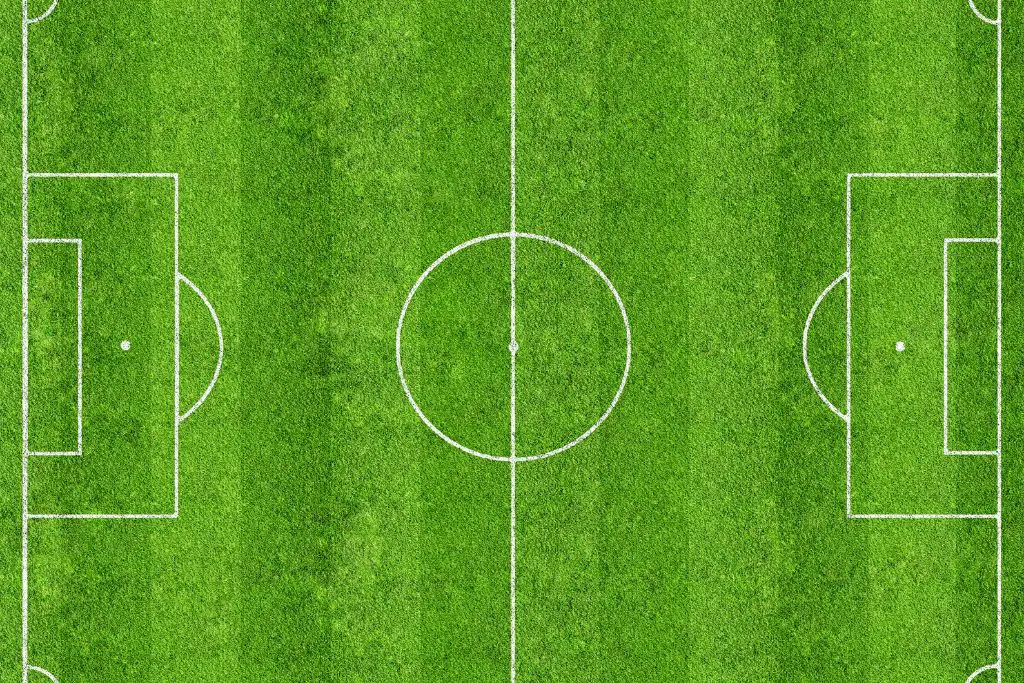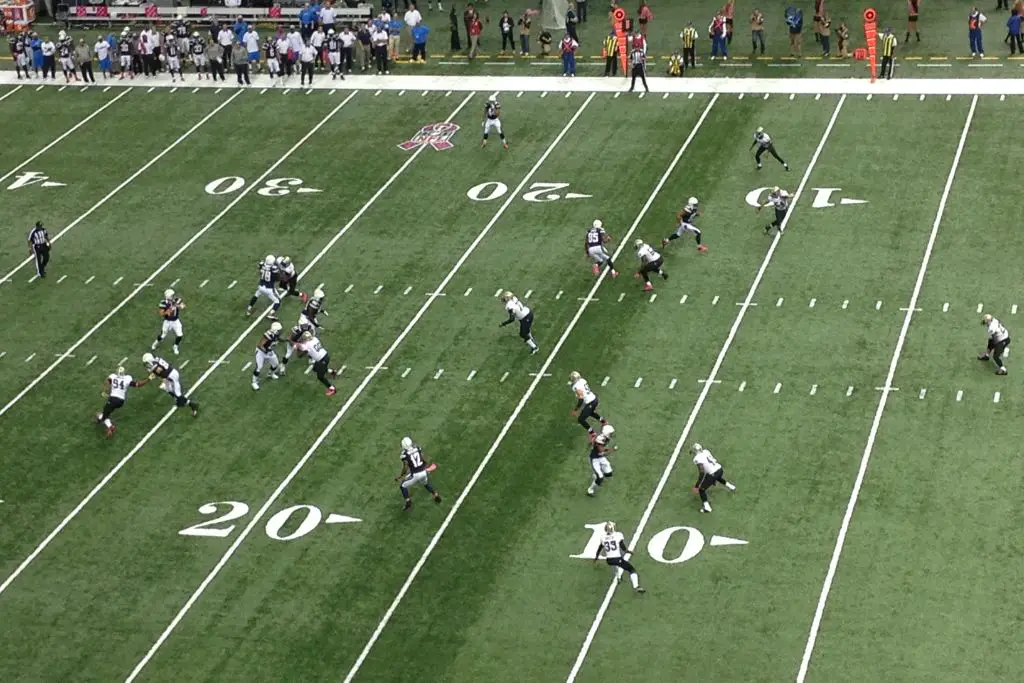When you sit down to catch a soccer game on TV, you might notice something others have. The pitch looks massive and even more so compared to those of other sports. It certainly causes one to wonder whether it’s just an illusion or if soccer players have otherworldly levels of stamina.
It only makes sense that pitches are large, so twenty-two men have adequate space to play on. But soccer fields look even bigger on TV because of the wide-angle lenses cameras use to broadcast the game. Additionally, a greater portion of the field is always in the frame to capture the flow of play.
You may have more burning questions about soccer fields and their sizes. In this article, I will tell you all you need to know, from the pitches in our own country to those in stadiums across the pond.
Why Do Soccer Fields Look Bigger on TV?

As a child watching my first World Cup match on TV, I marveled at the enormity of the pitch. It was simply huge! I was further astounded when I learned that a full match consists of ninety minutes of running up and down that stretch. But as it turns out, it isn’t as bad as it seemed.
Soccer fields are indeed large stretches of turf. But they look even bigger on TV for a couple of reasons:
- Cameras are equipped with wide-angle lenses. A wide-angle lens is designed with a long focal length and a wide angle of view. This means that it can capture a wider horizontal image, but there are slight distortions with subjects further away from the camera (the players) appearing smaller, thus, making the field look bigger.
- Large sections of the field are kept in the frame. Cameras in other sports may largely focus and zoom in on players or particular sections of the field or court. But in soccer, greater distances are covered in the progression of play which usually involves several players spread out across a wide area of the field. That is why it is necessary to keep large sections in the frame at all times.
- The stadium backdrop gives it a larger appearance. The best soccer stadiums around the world are massive structures that rise from their green centerpieces to the highest beams on the grounds. This adds to the image distortions created by the wide-angle lenses. And when the bleachers are further packed with thousands of people, these stadiums and their fields appear much bigger than they actually are.
Why Are Soccer Fields So Big?

When you simplify it, soccer is just a game where players kick a ball up and down a field, with each team trying to put the ball in the goal at the opposite end from their own. But when you look at the details, it begins to make sense.
Both teams on the field are composed of eleven players each. And let’s not forget the referee. That’s typically twenty-three men occupying the pitch at the same time.
The beauty of soccer is partly due to those gorgeous long-range passes and crosses when players skillfully bend the ball over distances. You would not see many of these works of art in smaller, restrictive fields.
Think of a local park with soccer pitches. There are usually fixed goals on either end and much smaller, portable goals to the side that can be brought onto the pitch.
When there aren’t enough players around for a proper match, these small goals are brought on, and the play area is downsized for a quick seven-a-side game.
Having an oversized pitch would be illogical. Soccer fields should be of dimensions that are just sufficient for the players involved and for the sport to be played out.
Perhaps then soccer fields are not so big after all. They’re just the right size.
Are All Professional Soccer Fields the Same Size?

The most iconic soccer grounds have one very obvious thing in common—they’re huge! But there are different levels to their hugeness, and professional soccer fields are actually not all the same size.
This may come as a shock to many. Yes, there can be variations in the dimensions of the fields, from the grassroots to the youth and amateur divisions. But one would expect a standardization for the professional scene.
Soccer fields are so big because they need to accommodate the players and allow them adequate space to move the ball around. Soccer fields are big because they have to be. But their measurements are within reason, and the number of players is the prime consideration.
Professional soccer has a governing body, the International Football Association Board (IFAB), that lays down the rules of the sport. This also covers the dimensions of the fields of play.
According to the IFAB’s laws of the game, the length of the touchline should be a minimum of 100 yards (90 meters) and a maximum of 130 yards (120 meters), while the width of the goal line should be a minimum of 50 yards (45 meters) and a maximum of 100 yards (90 meters).
Professional soccer fields may have variations in their widths and lengths. But as long as they stay within the range of these dimensions, they are approved by the IFAB.
However, it should be noted that some leagues and competitions require that all participating teams’ stadiums be in specific widths and lengths.
Why Are Some Soccer Fields Bigger Than Others?

To the keen observer watching different soccer matches on TV, there are variations in the sizes of soccer fields. This can become more observable when you follow a club’s home matches and away games in different stadiums.
There are indeed differences in the sizes of the pitches, even in the professional leagues. Some soccer fields are bigger than others because the IFAB, the governing body that establishes the sport’s rules, gives a range for the dimensions of the field of play and not specific figures.
Soccer clubs and organizations are allowed to construct their stadiums with the length and width of their fields to their preference, provided they are within the IFAB’s stated range. They often choose dimensions that suit their team’s style of play best.
Are European Soccer Fields Bigger?
European soccer fields are generally bigger than American ones. Just as soccer fields vary in size within US Major League Soccer stadiums, the same is also true for those on the other side of the Atlantic.
Most European pitches cover 115 yards (105 meters) in length and 74 yards (68 meters) in width. By comparison, MLS stadiums are mostly 110 yards (100 meters) long and 70 yards (65 meters) wide.
Is a Soccer Field Bigger Than a Football Field?

When you compare the average sizes of soccer fields with football fields, you will find that soccer fields are bigger. Soccer fields can be about 10 yards/meters longer and significantly wider than football fields.
Soccer’s governing body, the IFAB, has established that the dimensions of a soccer field be within a minimum of 100 yards (90 meters) and a maximum of 130 yards (120 meters) long, and a minimum of 50 yards (45 meters) and a maximum of 100 yards (90 meters) wide.
On the other hand, the National Football League rulebook states that the field of play should be 120 yards (110 meters) in length and 53 ⅓ yards (50 meters) in width.
Are Soccer Fields Flat?
For this sport to be fair, soccer has to be played on an even surface, with neither team having any advantages due to the pitch. Because of this, soccer fields need to be flat.
Imagine a soccer field that slopes down towards one end. The team defending that goal would have a more challenging time keeping the opponents’ momentum in check. And when they launch their own attack on the other side of the field, they would have a bit of an upward climb.
An even pitch would prevent terrain advantages and disadvantages beyond a player’s control. Having a flat area of play is essential for a fair game.
Final Thoughts
Soccer fields tend to look bigger on TV because the cameras are equipped with wide-angle lenses to capture more of the field at a given time, and we see more in the frame for much of the game.
By comparison, the nature of other sports allows broadcasters to often focus on individual athletes or key areas of the pitch or court.
But these illusions aside, soccer fields are indeed large stretches of grass whose size is made necessary by the number of players the sport requires.
Sources
- The International Football Association Board – Law 1 – The Field of Play
- Bundesliga: All you need to know about a soccer field
- Bleacher Report: Ranking the Top 20 Stadiums in World Football
- Official NFL Playing Rules: Rule 1 – The Field
- MasterClass: Wide-Angle Lens vs. Telephoto Lens: Understanding the Difference
- Vanity Fair: Cinematographer Explains 3 Different Camera Lenses | Vanity Fair

